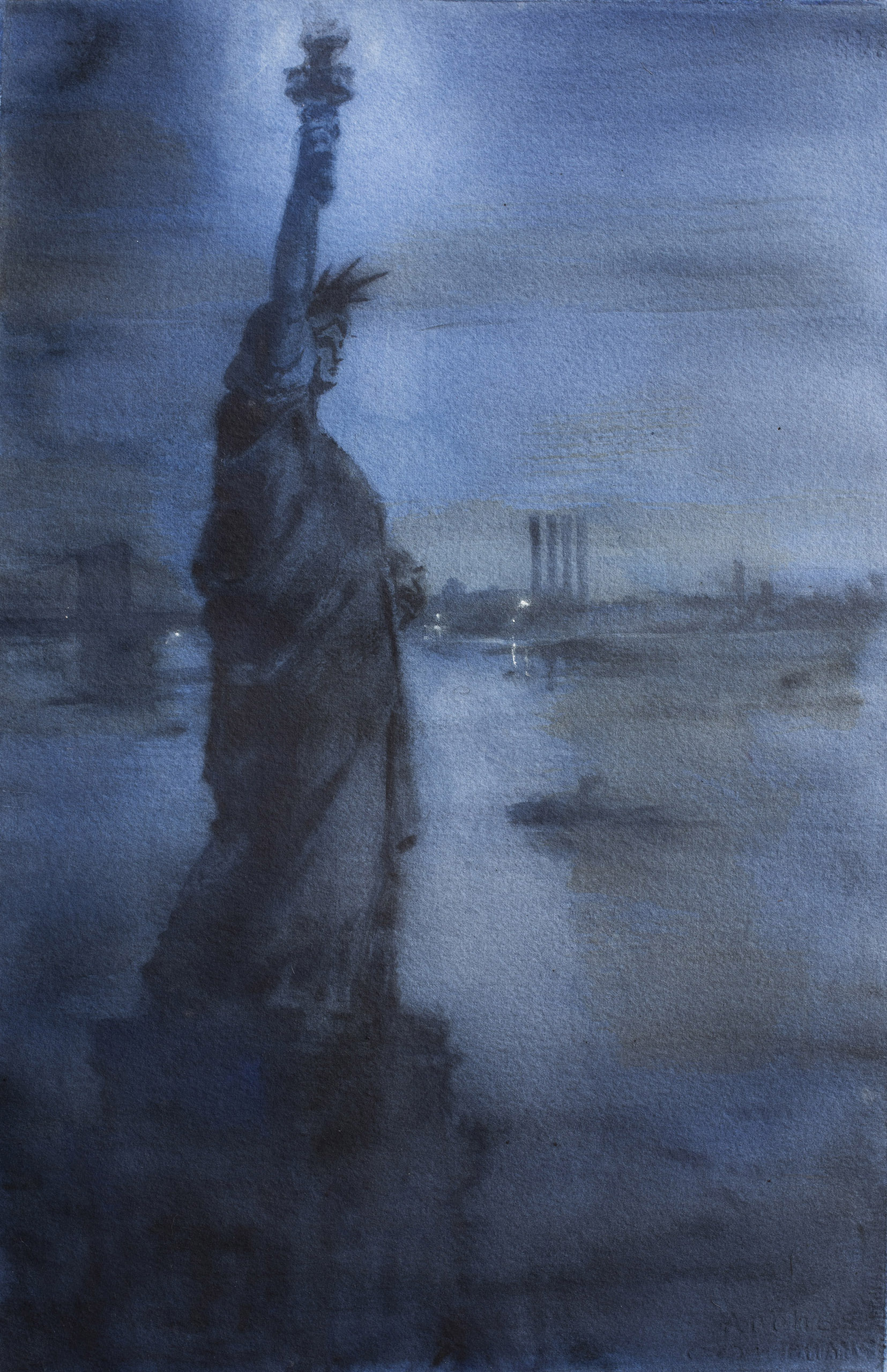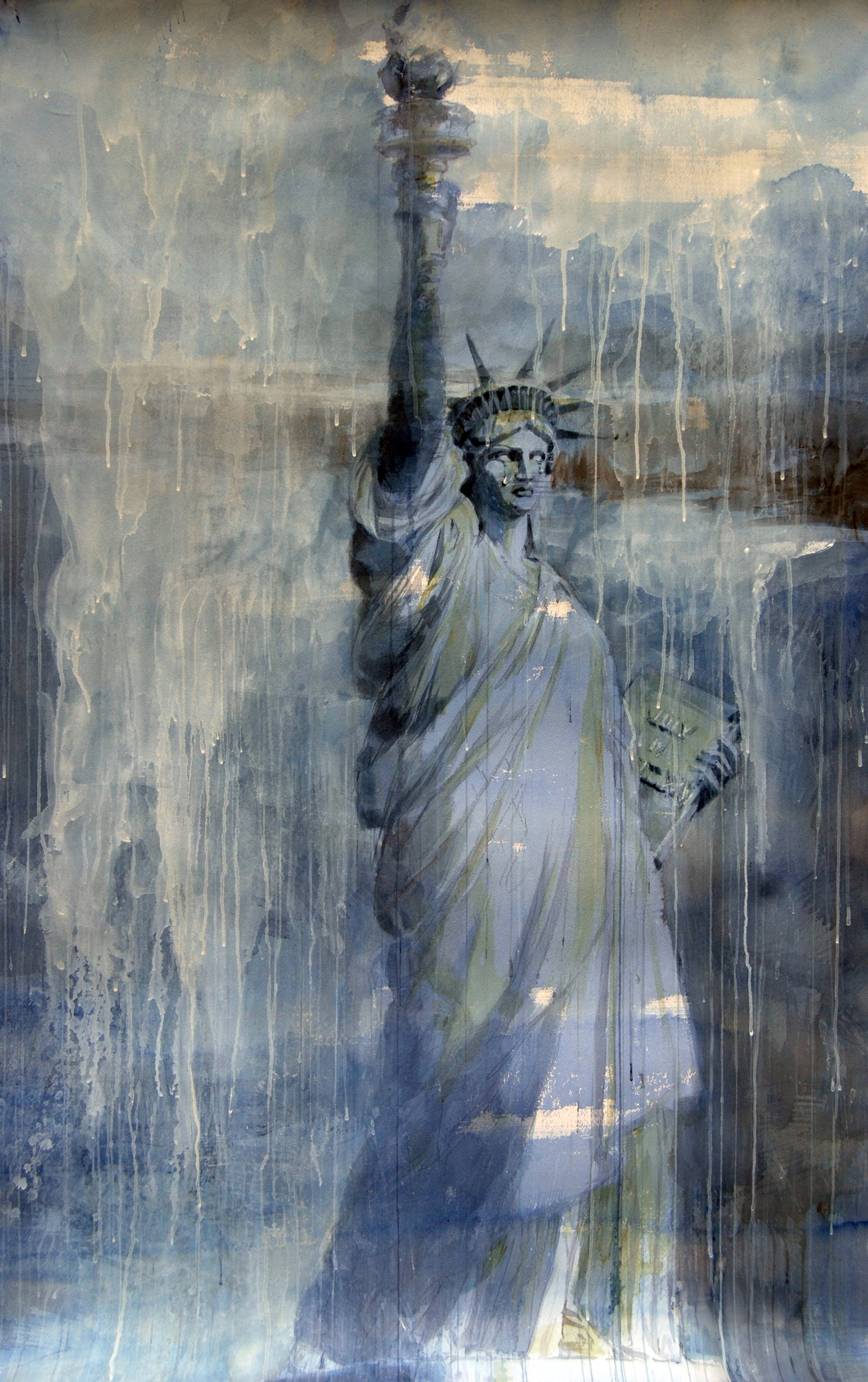
“In 1947, when I was seven years old, my parents, five brothers, two sisters, and I came to New York City from Italy,” says watercolor artist Antonio Masi. “We travelled seven days on a freighter and landed on Ellis Island.
“That moment of entry on December 7, 1947, is still vivid. As we passed through immigration, I remember straining to see New York harbor through the windows of the processing center. In the distance, thousands of glowing lights dotted the skyline. The metropolis beckoned, and I intuitively grasped the promise, excitement, and staggering immensity of the place.

“Today, I have no doubt that my deep feelings for the city derive from those first indelibly imprinted and magical moments. As an artist, I found that I wanted, somehow, to replicate on canvas those first sensations. Conversely, I also wanted to convey how the metropolis’s incomprehensible vastness and richness can sometimes make one feel (especially an untested seven year old) small and insignificant.

“About a decade ago, I began a series of paintings that mainly focus on the bridges of New York City. The first bridge I painted was the 59th Street (Queensborough) bridge. I have a particular attachment to the 59th Street Bridge because in the early 1900s my grandfather Francisco Masi was one of the multitudes of Italian laborers who hauled steel girders to build it. Many years later, I learned that the bridge opened in 1909 and that more than 50 people had given their lives to building it.

“In 2000, at age 60 and after raising three children, I was finally able to dedicate myself to painting the major bridges of New York City. I work mostly in watercolor and feel, contrary to old-fashioned expectations, that it is a powerful medium, capable of expressing bold subjects. I tend to use watercolor thickly — the way most people use oils. To develop mood, I apply multiple glazes and juicy washes. Then I refine areas with descriptive details.
“I am a student of the bridges I paint. When possible, I walk every bridge that I paint. I study the history and architecture of each bridge. I see a bridge in terms of place. How does a bridge fit into its immediate surroundings and into the city? Each bridge’s structural development also interests me. No matter its size, each bridge is a mix of pins, bolts, curves, angles, masonry, and wire. Each bridge must bear the burden of often extraordinary weight and changing weather. In studying each bridge, I work to understand basic design principles. I then incorporate this knowledge into each painting. Finally, I study each bridge at various times of the day and night, in different seasons, and in all kinds of weather. All these elements help determine light and mood.

“My primary concern, always, is to capture mood and those stirring, overpowering sensations reminiscent of my first glimpse of New York harbor. My paintings are often (but not always) large. Sometimes iconic subjects demand largeness. In the end, my subjects — grand and powerful as they are — are secondary to conveying what I feel in the moment.”
 In Lady Liberty, Masi has illustrated Joan Marans Dim’s story of the immigrant experience in the United States with compelling images of the Statue of Liberty and Ellis Island.
In Lady Liberty, Masi has illustrated Joan Marans Dim’s story of the immigrant experience in the United States with compelling images of the Statue of Liberty and Ellis Island.








Very good article and excellent paintings, but kind of weird and disappointing that there are no examples of his bridge paintings since he spends so much of the article discussing and describing them.
I get Kate’ point. I understand he is pushing the Statue of Liberty because of the book but one bridge picture would have been more meaningful and appropriate considering the content of the article.